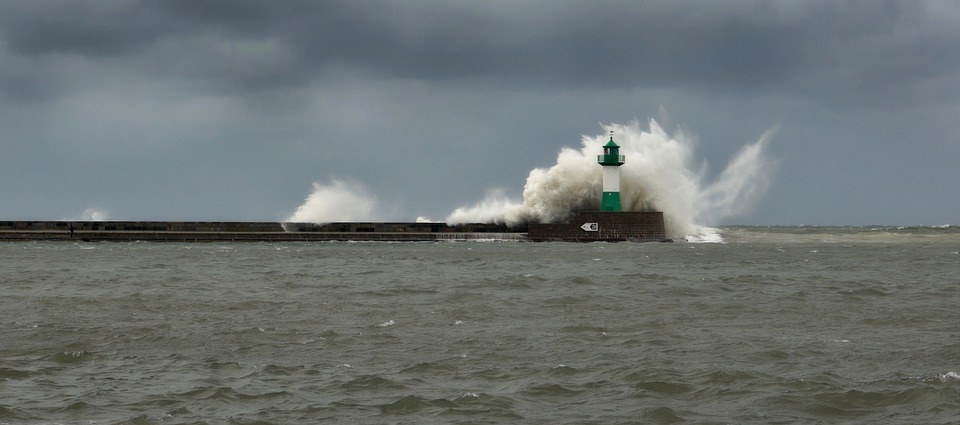Scipione Lentolo – A Firm Hand in Unstable Times

Scipione Lentolo – A Firm Hand in Unstable Times
John Calvin didn’t have a good opinion of Italians. Basing his judgment on the scholars he had met, he thought they were too skeptical, too eager to get embroiled in convoluted discussions, and constantly itching for new ideas. In his writings to those he defined “Nicodemites” (people who kept their convictions secret, like Nicodemus who came to see Jesus by night), he had partially the Italians in mind – those who had discovered the freedom of the gospel but seemed too comfortable in a highly-restrictive Roman Catholic country.
It didn’t help that most of the antitrinitarians Calvin encountered, such as Bernardino Ochino and the brothers Lelio and Camillo Sozzini, were Italian. This negative judgment was shared by other Reformers north of the Alps. Even one of the Italian theological giants, Girolamo Zanchi, drew some criticism when he praised the intellectual abilities of a suspected antitrinitarian.
Scipione Lentolo, Zanchi’s successor as pastor of the Italian church in Chiavenna, in the Swiss Canton of Grisons, was of a different mind.
Friar, Soldier, and Italian Teacher
Born in Naples, Italy, in 1525, Lentolo entered at age twenty in a local monastery of Carmelite friars. After obtaining a license to preach in 1542, he eagerly asked to be transferred to the Tuscan city of Siena, since he found the Neapolitan friars to be lax in both discipline and educational standards.
In 1544, he moved to Ravenna where he was exposed to evangelical teachings and began to “preach and acknowledge the truth of the gospel.”[1] After this, he moved around frequently, spending some time in Rome and Ferrara, where he met the duchess, Renée of France, a supporter of Reformers.
Lentolo continued his studies in Padova and Venice, where he earned a doctorate in theology, then returned to Naples. In 1551, his mother became bedridden and he spent time by her side. This is apparently when he decided to leave the Carmelites, and to accept the invitation of Nicola Francesco Missanelli, bishop of the nearby town of Policastro, who gravitated towards the Reformation.
As Lentolo refined his religious convictions, he continued to move around, maybe to avoid the attention of the Inquisition. But in 1555, the Court of Inquisition issued a mandate for his arrest. There is no documentation of his trials, but he avoided capital punishment and was transferred to the Carmelite monastery in Naples where he was supposed to stay as prisoner for the rest of his life.
Two months later, he managed to escape by night and moved to the home of a friend in Ferrara. After paying a quick, final visit to his mother, he sailed to Sicily and signed up for military service. By this time, his faith had matured. In 1559, at the end of his military service, he traveled to Geneva, where he joined the Italian church and supported himself by teaching Italian (the best-known language in Europe after Latin)..
Dangerous Times
Lentolo’s abilities didn’t escape the attention of Geneva’s Company of Pastors, who asked him to transfer to the Italian region of Piedmont, by the north-western Alps, to succeed a Valdensian minister who had been burned to the stake for his faith. Lentolo, who had previously refused to move to the dangerous area of Piedmont, could not reject this calling.
Lentolo’s sermons were well received and he was invited to preach in different towns. In May 1560, he married Maria Guisani. Nothing is known about her, but the last name “Guisan,” absent in the Piedmont valleys, was common in Geneva, suggesting that the marriage might have been arranged there.[2] The couple had ten children.
While in Piedmont, Lentolo worked on a history of the Valdensians, praising their courage. He was also asked to translate the French Confession of Faith, which had been approved by the Huguenot Synod of Paris. The goal was to present the translation to Emanuele Filiberto, Duke of Savoy and ruler over the Valdensians’ lands. This was a typical measure taken by Reformed pastors in order to convince hostile rulers that their teachings were not in contrast with the Bible.
In spite of this, the relationship between the Valdensians and the duke continued to be uncertain, with frequent persecutions. A respite came in 1561, with the Peace of Cavour, an agreement that allowed them to worship as they wished within their valleys.
But things changed again in 1565, when the duke expelled Lentolo and other pastors from their lands. The reason for this overturn might have been the publication of some writings, by Lentolo and others, against some practices of the Roman Catholic Church. His departure was seen with a measure of relief by some Valdensians who had been trying to keep a low profile (an attitude Calvin would have classified as Nicodemite).
After spending some time in Switzerland, Lentolo moved in 1568 to a valley in the eastern Italian Alps, Valtellina, which belonged to the Swiss Canton of Grisons and hosted a large Protestant population. Here, he was faced with new problems.
On one hand, he had the opposition of the Roman Catholic Church, which had still a strong presence in the valleys. Carlo Borromeo, a strong promoter of the decisions the Roman Catholic Church had taken at the Council of Trent, had just become archbishop of Milan and had begun a fierce battle to reabsorb into the Roman Catholic fold every territory that had become Reformed.
Equally challenging for Lentolo were the heterodox teachings of people like the Sicilian Camillo Renato, who held to a mixture of anabaptist and antitrinitarian doctrines. This pot-pourri of religious beliefs was common in Italy at a time when the Roman Catholic Church was fiercely attacking any form of dissention. Quite naturally, dissidents tended to group together, regardless of their differences.
A Firm Stance
The Reformed pastors in Valtellina were divided on how to deal with this mixture of ideas. Some believed that all theological disparities had to be put aside in order to create a united front against the Roman Catholic opposition.
Others, including Lentolo, believed that truly heretical doctrines, such as antitrinitarianism, could not be tolerated in any situation. Any tolerance of heresy would have only reinforced the Roman Catholic convictions against Protestants. Instead, the Reformed churches had to adhere to a clear confession of faith, which would not only weed out the heretics, but help the congregations to have a clear understanding of what they professed to believe.
With the backing of pastors from nearby areas, Lentolo’s position prevailed. In 1570, the Reformed churches formally subscribed to the Rhaetic Confession of Faith (the official confession in the Grisons since 1551). At the same time, Lentolo and other likeminded pastors asked the local authorities to mandate the expulsion of those who didn’t belong to either a confessional Reformed church or a Roman Catholic church.
Lentolo was also strict with those pastors who had been on the fence. In the end, most people who had sided with the dissenters agreed to subscribe to the confession of faith, while a handful left the valleys. Some went to Poland, which was at that time tolerant of different views.
As Lentolo had foreseen, the pastors in Valtellina were now able to strengthen the faith of their congregations. Lentolo’s stand also contributed to dispel the common notion that Italians were wavering in their convictions, and strengthened the ties between the Reformed churches in Italy and those beyond the Alps. Lentolo held a particularly close correspondence with Heinrich Bullinger, pastor of Zurich.
Besides his history of the Valdensians, Lentolo wrote several other works, including an Italian grammar and a few Italian poems, and translated works of other Reformers.
He retired in 1596, after training another pastor to take his place. Two years later, the arthritis that had plagued him for a while worsened to the point that he had to stay in bed. He died in Chiavenna on January 28, 1599.
The peace in the Valtellina region didn’t last long. About 35 years later, its Protestant population was cruelly massacred.[3] But Lentolo’s work was not in vain. It brought fruit, both in the individual lives of local believers and as an example to others.





